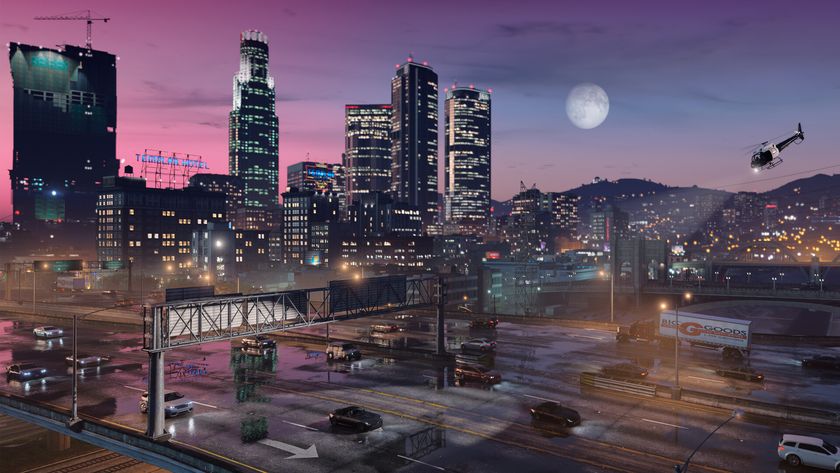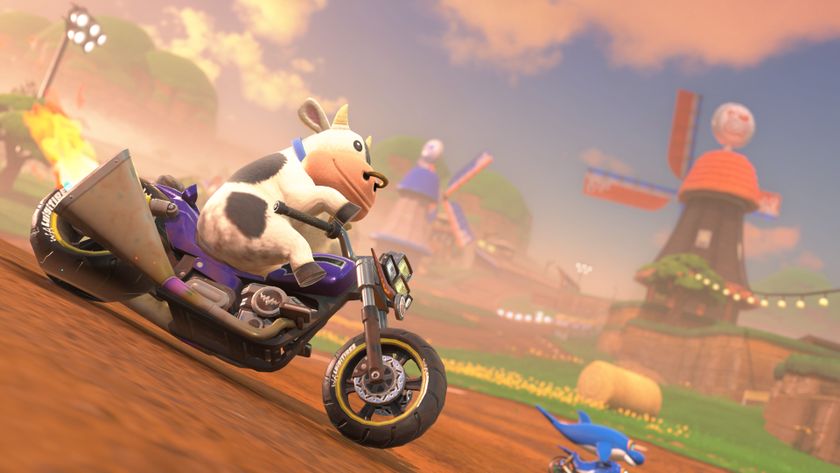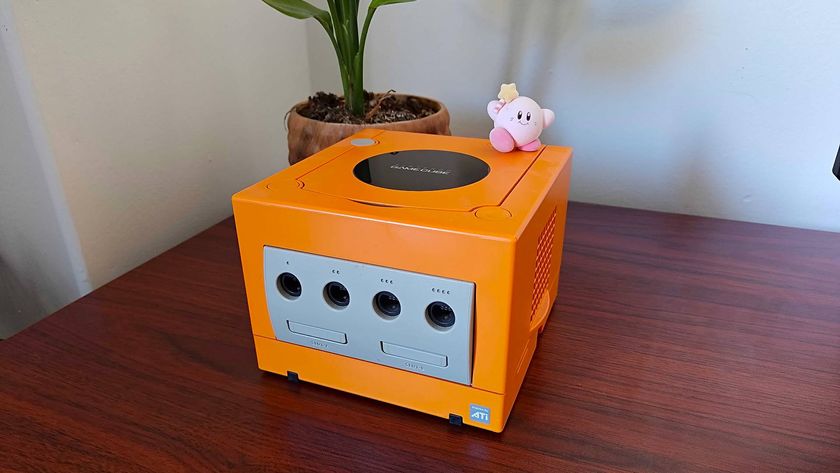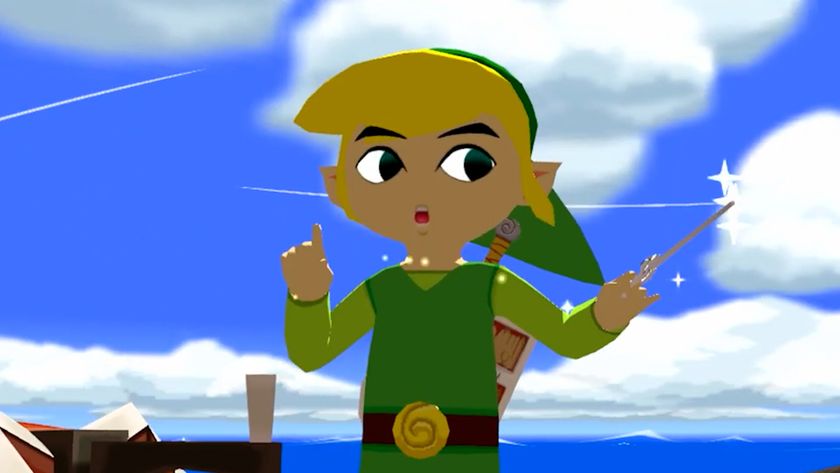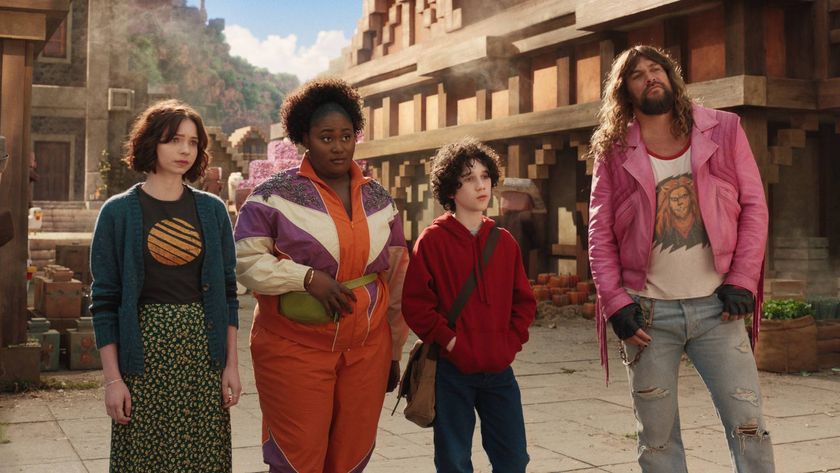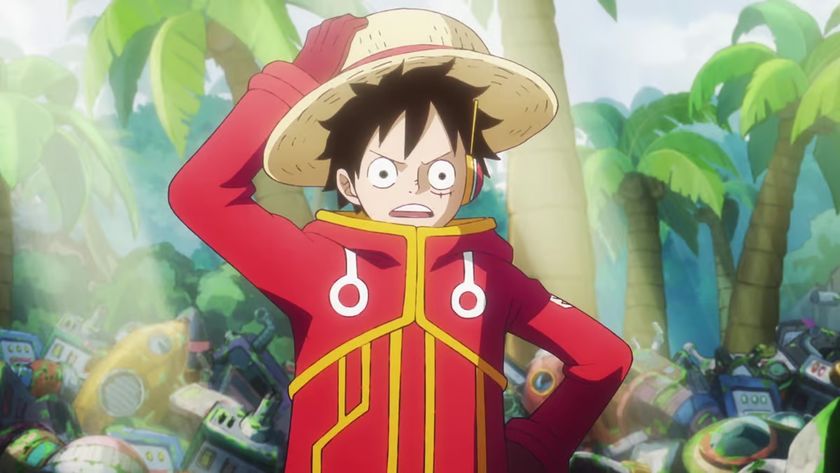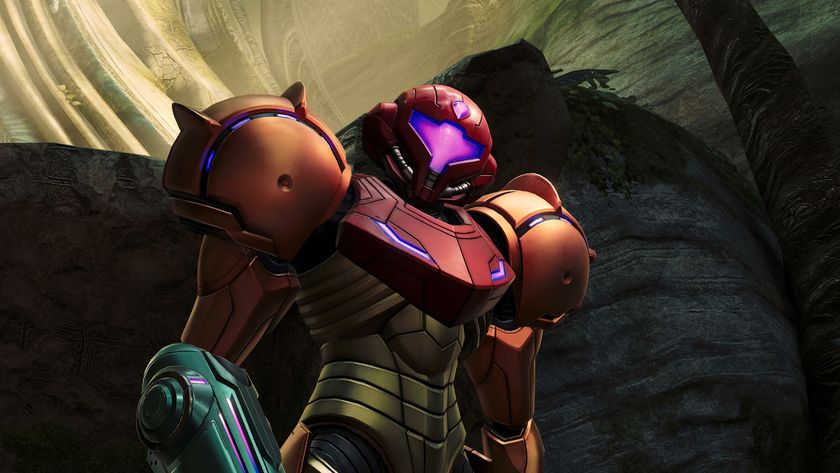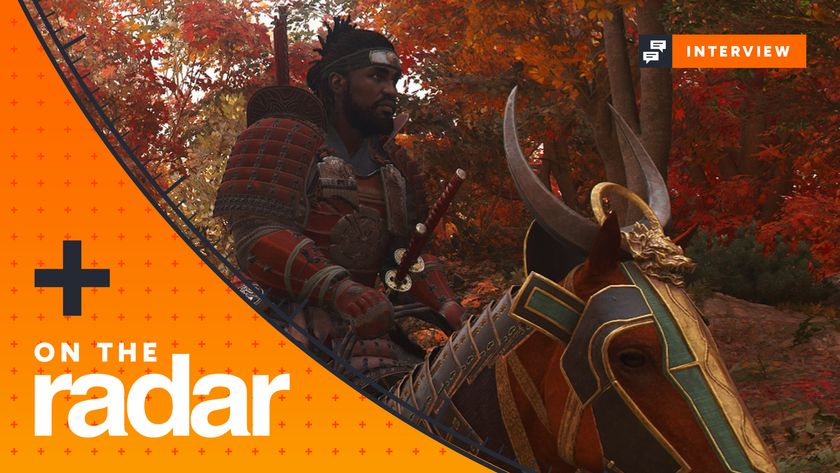Given Doctor Who's awards-guzzling, headline-grabbing, Beeb cherishing cultural omnipresence in 2009, it's a strain to remember a time when the BBC put a "Kick Me" sign on its back in 1985, cancelling the show, only to give it a scaled down reprieve weeks later.
That 18-month suspension and the subsequent halving of Doctor Who's annual airtime effectively killed the planned 1986 season, with the bloated and lifeless 14-part Trial of a Time-Lord epic taking its place. Whole scripts had been written, writers paid and directors booked, and with a stroke of Michael Grade's cruel hand, all were cancelled, never to see the light of day. Until now, that is...
It's a chilly March in 2009 and in the inconspicuous Moat Studios recording facility in London's Ladbroke Grove, Big Finish Productions are finally breathing human life into that lost 23rd season of Doctor Who. For the past ten years they've been keeping the Classic Era Who flame burning with a monthly production line of original Who audio plays that have proved so impactful even Russell T Davies cribbed some for his TV version. But this is the first time they've tackled scripts that belonged in the long line of unmade TV Doctor Who. Some of those stories have already been given a literary airing, but for most of these, it's the first time Doctor Who fans will have had any glimpse into what could have been.
"It's weird to be finally doing these stories after nearly 25 years," says Nicola Bryant, looking Dorian Gray-ishly unaged since since she last played Peri on TV. She's here, reunited with Colin Baker, who, it has to said, does look a little different to the 1985 model. But time hasn't affected his vocals, which remains trapped in a 1985 amber. Unlike Peter Davison, whose voice has been Pacino-ed up since his Doctor Who heyday, it's always been easier to picture Colin Baker as he was in the 1980s in his audio stories.
SFX is here today to eavesdrop into the recording of “The Hollows Of Time”, the fourth story in Big Finish's Lost Stories range. They've already got Ice Warriors story Mission To Magnus and The Nightmare Fair (which sees the return of 60s baddie the Celestial Toymaker) under their belts, as well as a story entitled Leviathon, which had previously never even been heard of.
"We're doing eight in total," says producer David Richardson, whose idea the season was. "Originally we were going to do seven and then one day this email arrived from Tim Spilsbury at Doctor Who Magazine saying that somebody had contacted him saying he was the son of a writer called Brian Finch who had written a script for Doctor Who in the ’80s called Leviathon. The writer had sadly died but the son got in touch saying he had the script and would we be interested. So he send me the scans and I thought, 'Blimey, we would!' So now that one has joined the line-up."
Today, though, it's “The Hollows Of Time”'s time. Written by former Tom Baker-era script-editor Christopher H Bidmead, it's a characteristically concept-heavy slice of Who from the man who was the programme's most rigorously scientific writer. The story sees the return of the Tractators, Bidmead's beetle-type monsters he created for the Peter Davison story Frontios. Colin Baker wasn't even aware until today that they'd appeared in the programme before and has to be corrected by director John Ainsworth on the pronunciation of the name "Gravis", the head of the Tractators.
Sign up to the SFX Newsletter
Get sneak previews, exclusive competitions and details of special events each month!
"It's a complex story this one, I have to say!" Baker tells SFX, sitting down in the coffee room next to the recording studio. "It reminds me of a Sapphire & Steel script because it's about layers of reality. It's quite interesting juxtaposing the new Big Finish scripts with the ones that were written for my Doctor 20 years ago. Of course, they're very different because my Doctor has moved on through the good offices of Big Finish and we're reverting to people's idea of who my Doctor was 20 years ago, which is just as valid because that's who my Doctor was then. It's a very interesting script. As always there's a problem of converting a television script to an audio one without going, 'Hello, that's a nice red coat you've got on there stuck in front of that white building.' I have to say the guys at Big Finish have done a good job of adapting it."
"I knew nothing about the story!" director John Ainsworth says. "Like a lot of these TV scripts, this one was very visual in places, which made it a challenge for Chris Bidmead to adapt and for me and the actors to convey. With audio drama you always have to find a good balance between conveying the visual elements through dialogue whilst keeping the speech as natural as possible. With the Lost Stories, there is the added concern that you don't want to move too far away from the original script as the whole point of these plays to to give as close as possible an idea of how the story would have been presented on TV had they been made."
Inside the wood-decked studio it's surprising how quickly they race through the recording. It takes two days to record the actors and then after that a few months in post-production, to edit the thing and embellish it with sound effects and music. The actors are on the other side of a sound proof plane of thick glass, isolated inside individual cubicles and adorned with headphones and an ever-present script. They've just finished a take where a chauffeur is picking the Doctor up. Ainsworth finishes a take and suggests one more go. "Make it a little bit more hurried," he says from behind the mixing desk. "It's a bit leisurely at the moment." Most of the time they don't go for whole second takes. If there is a retake it's for one line, which will be spliced into the scene in post.
For both Colin Baker and Nicola Bryant, this isn't like coming in and doing a normal audio adventure. Big Finish has done a lot to redeem the reputation of Colin Baker's Doctor. Over the past ten years a succession of writers, including season five scribe and Baker favourite Rob Shearman, have remoulded Doctor Six into a more rounded figure (figuratively speaking, of course). But a desire to stay true to the spirit of this lost 1986 season because of scripts written 25 years ago has meant that Baker and Bryant have had to shed some of the sophistication Big Finish have brought to their characters over the years.
"The difference is that he's less complex," Baker tells us. "It's a simpler Doctor the 1980s Doctor. The plan was always that my Doctor would evolve into something a little less simple and more complex so that assumptions made early on weren't necessarily who the Doctor was. It's like Darcy in Pride & Prejudice. 90% of the book we think he's an arrogant pig and the last 10% you realise he's the only really decent character in the whole thing. That's how I always envisaged the Doctor. You may not understand what he does initially but ultimately you know it's for the greater good. We've got to that point now with the audio stories and the writers seem to be relishing the opportunity to write for him. But obviously we have to be true to the scripts that were written back in the ’80s when we were still exploring that. Christopher Bidmead, when he was writing it, presumably didn't know too much about my Doctor so he was keeping within quite tight parameters. For saying that, it works totally and I probably am subconsciously old Sixey as I call him with these more up-to-date qualities. But as far as I can I'm trying to make him what he was when I would have been doing it."
"The interesting thing here is going back and playing with these ’80s scripts which do have a different feel than the ones we're making now," Bryant adds. "You feel like there's a difference in the period that there will be certain comments made by characters, and you're thinking, 'Aww, I don't think we could say that now!' We like to think of how PC the ’80s were, but weren't... There are elements of that. And also the writers that currently write for Big Finish and write for my character, they're used to our characters and some of these scripts, you look at it and think, 'Well, I don't think I would have done that. There are things that would have been changed once they'd been through the script editor and producer."
Some of the Lost Stories are already known from the Target book novelisations. Philip Martin had already adapted his Mission to Magnus script in 1990 and Graham Williams novelised The Nightmare Fair in 1989, a year before his death.
"Mission to Magnus is really quite close to the story people know from the Target adaptation," says Richardson. "I felt that there was no point in making any changes to it because people knew it and if we'd have asked Philip to do a different version of the adaptation then people would be up in arms that Big Finish was basically tampering with something that was already established as Doctor Who. As regards ‘The Nightmare Fair’, we approached Graham Williams' widow and asked for the rights to adapt it. John Ainsworth did the adaptation and he did take scenes from the Target book because there was more material in that than in the original script. We also changed the end of episode one purely because when you take a TV script and turn it into audio that first episode had a lot of establishing shots of Blackpool because obviously they'd have wanted to sell the fact that they're out there filming.
“When you did it for audio we were left with an episode that was 30 minutes long whereas episode two came in at an hour and a quarter. So we actually shifted the episode ending, and me and John didn't see eye to eye of that, but I felt it would be wrong to have a Doctor Who production that was half an hour for episode one and an hour and quarter for episode two. It wouldn't balance. With this one I know Chris felt very strongly that the work he delivered was the one that should be recorded. We did have to make some tweaks. I felt like there was too much verbal description about what was happening so we have pared that down a bit. Whether Chris will be happy about that when he hears the final version, I don't know."
Back in the studio, Ainsworth has paused the recording, after the engineer has pointed out there's a sound irregularity. He leans into the microphone to address David Garfield, who's playing Professor Stream. "Have you got change in your pockets? I can hear rattling!"
Garfield checks "Ah, I do have," he says. "There's a pen in there in there as well."
Ainsworth goes for another take. "It is you David, I'm afraid," he says. Garfield looks sheepish. "I'll take the money out and give it to some needy cause..."
After this story there's another five to take on. One of the most anticipated is “Paradise 5” by Sapphire & Steel man Peter J Hammond, which was written as a four-part story for within the “Trial Of A Time-Lord” epic, only to lose out to the woeful calamity that was “Terror Of The Vervoids”.
“‘Paradise’ 5 was originally intended for the slot that became ‘Terror Of The Vervoids’,” says Richardson. “I love Sapphire & Steel, and think Peter's Torchwood episodes were brilliant, so the chance to produce an unmade PJ Hammond Doctor Who story seemed to be something of a Holy Grail. I contacted Peter and he sent me all of his paperwork - which comprised the script of episode one, plus the storyline. Sadly, he didn't have time to complete it for audio, but was very happy for someone else to take the task on board, so I chose Andy Lane, who is a writer I admire greatly. He did a superb job of running with the original notes, fleshing them out, and delivering something that was very true to the original intent. Peter emailed me and said he was absolutely thrilled with the result."
Also part of the season is a story called “The Macros”, written by former Hammer Horror vixen Ingrid Pitt which the actress had to reconstruct from memory, the original script having been lost in a computer crash. And Barbara Clegg, who had penned the effervescently imaginative “Enlightenment” for Peter Davison was set to return for season 23, with the story “Point of Entry”. “It's got some classic elements,” says Richardson. “A really formidable villain, a wonderful period setting, and some big scares. Marc Platt has written the script to Barbara's story, although she was involved every step of the way.”
Unfortunately, one story that was known about hasn't made it to the audio season. Robert Holmes' “Yellow Fever And How To Cure It” was to have have reunited the Master with the Autons and was set to have been filmed in Singapore. Nothing much more was known about the story and for good reason: there wasn't much of it there.
“We considered doing ‘Yellow Fever’ but all that exists of it is a storyline for episode one and it would have been a three-part story,” Richardson says. “We looked at it and thought there wasn't enough there to actually doing it as a lost story. It wouldn’t have been true to what Robert Holmes had originally envisaged. I know people wanted us to make it but I felt what we'd be delivering wouldn't have been the product that would have been there in the 1980s.”
Doctor Who now has 200 stories behind it. And for every one of them is one that came this near to production. For the moment, Big Finish have confined themselves for the unmade stories from the 23rd season that never was. But there are dozens upon dozens more from each incarnation of Doctor Who. Might Big Finish be the place where we finally get to hear Pat Mills and John Wagner's “Space-Whale”? Or Blackadder man John Lloyd's “Shylock”? Or even “The Dark Dimension”, the special that would been BBC Worldwide's 30th anniversary gift to Doctor Who fans, had things gone differently.
“There are others that are crying out to be done, for sure,” smiles Richardson. “I think it depends on how this run goes down. There’s been a really positive response on the forums and at conventions. I think if people support these productions by buying them and they do well enough, then I certainly hope we can do more, yeah.”
For more information on The Lost Stories visit Big Finish
SFX Magazine is the world's number one sci-fi, fantasy, and horror magazine published by Future PLC. Established in 1995, SFX Magazine prides itself on writing for its fans, welcoming geeks, collectors, and aficionados into its readership for over 25 years. Covering films, TV shows, books, comics, games, merch, and more, SFX Magazine is published every month. If you love it, chances are we do too and you'll find it in SFX.
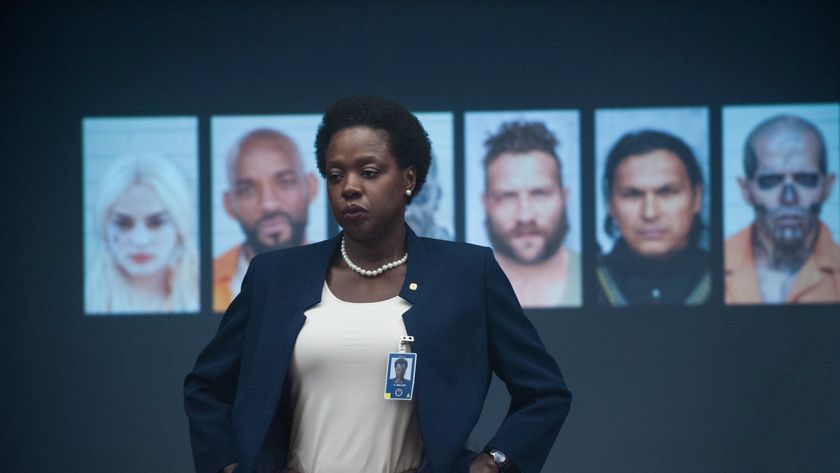
Doctor Who showrunner Russell T Davies is manifesting DC star Viola Davis being the next iteration of the villainous Master, calling her "one of the greatest actors in the world"

Doctor Who showrunner Russell T Davies reassures fans that this season's "standalone" Ruby Sunday episode does feature "lots" of the Doctor unlike '73 Yards', as star Ncuti Gatwa calls it his favorite


